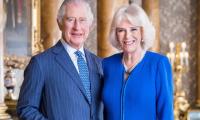In his series, ‘The mullah and the Pakhtun’ published in these pages on June 29, June 30 and July 2, Zalan Khan has contributed to a very important debate. Unfortunately, his analysis of the mullah and his position in Pakhtun society received less attention than it deserves.
It is a great misconception that the mullah was considered inferior in social organisation, especially in the era of Pakhto, governed by the unwritten code of Pakhtunwal (the way of the Pakhtun). This was a notion put forward by the propertied classes. In reality, the perception of the mullah in the eyes of the public is very different from that of the elite classes and their court historians.
Elites are hated for their tyranny and appropriation of the resources of livelihood. The mullah, in most cases, does not work the land or toil away as labour. At the same time, the mullah shares some ‘features’ with the common man too. It seems that in the earlier stage of the Pakhto era – the pre-state era – the Khan or Malik was not the only primus inter pares. The mullah too had a dominant position in jirgas.
Apart from lashkars and public congregations, in the fields anyone could lead the prayer. The division of labour and establishment of larger villages though make it imperative that someone with greater knowledge in religion must perform the duty of leading prayers and teaching children, and providing guidance in religious matters. This most likely leads to building mosques where all these activities are to be performed.
Traditionally, even in the 1960s, the mullahs performed as clerks for the villagers and in most cases practised hikmat and had some knowledge of Arabic, Persian, Urdu, Pashto and literature as well. The mosque was also a place where travellers, guests and petty traders were given food and shelter.
In general, the mullah’s role is considered neither exploitative nor productive. The perception that the mullah was included in the category of kasabgar – manual labour/skilled people – was established after the end of the Pakhto period. Available evidence seems to suggest that, like the Maliks and the Khans, at this stage the mullahs were also from leading tribes. During this period, land used to be set aside for special purposes like running ‘hujras’ and setting up mosques.
According to historians, hujras and mosques were maintained through endowments or ‘waqf’ lands commonly referred to as ‘Serai’. Like the Maliks and the Khans, religious and spiritual leaders including the mullahs were endowed lands from these ‘Serai’. In most cases, the Serai land was excluded from the periodic change of lands (called garzinda wesh or moveable sharing) with a sub-tribe or within a sub-tribe.
In most cases, Pakhtun tribes displaced previous occupants of land, and distributed the occupied land amongst tribes and sub-tribes with additional share in common land for all. This was not an ‘egalitarian system’ as is commonly believed. A Pakhtun, as member of the occupier group, usurped land at the expense of indigenous people and reduced them to the status of pariahs.
However, we can assume that ‘all Pakhtuns were equal’. According to historian Sultan-e-Rome, in Swat the title of Malik or Khan was not hereditary. They were elected by jirgas. Therefore, it can be inferred that in this period, the mullah also had an equal footing in matters of the ‘Khels.’ Religious leaders acquired focus for arbitrations with the secular leadership and centre of gravity shifted once landlords were established. Consequently, those who acquired an extra share of land by hook or by crook became landlords.
In Pashto, the term mullah is used for ‘prayer leader’ or priest. According to Dr Sultan-e-Rome, the mullah ‘usually performs imamat (leading the prayers) in the mosques and teaches the Holy Quran and Islamic injunctions to the people.’ Therefore, a mullah must be distinguished from pirs, and religious and spiritual leaders like Syeds, Miangan, Akunds, Sahibzadas, and Shaikhs etc. At the same time, many pirs and Syeds may prefer to lead prayers as they dislike to be led by someone inferior to them. But this superiority is purely based on spirituality and lineage. Yet, prayer leaders of grand Jamia mosques have a higher status even those of landlords. The picture of the mullah painted by most writers is closely associated with feudal era.
Though Pir Roshan and Syed Ahmed Shaheed might have led thousands in prayers, neither Pir Roshan nor Sartor Faqir nor Syed Ahmed Shaheed was a prayer leader. Most obviously, a number of Taliban commanders cannot be included in the category of ‘Talib’ (madresssah student) or mullah. What is truly striking is the fact that Dir and Swat were ruled by the descendants of spiritual personalities instead of by Khans or Maliks.
Despite this, like most elites of the region, the rulers of Dir and Swat had supported the British in one way or the other in 1897, while ‘the Malakand uprising’ was led by Saad Ullah Khan who was known as Mullah Mastan for his bravery against the imperialist power; Winston Churchill translated that as ‘Mad Mullah’ in his reports on the Malakand campaigns. Like Zalan Khan, Churchill too referred to him as a mullah.
According to many accounts, Mullah Pawinda, who resisted the British in Waziristan around the same period, despite his closeness to the clergy and mullahs, was also not a mullah. It seems those who resisted the British in the name of jihad or religion were labelled mullahs and non-conformists as Wahhabis.
The writer is an independent researcher. Email: sartaj2000@yahoo.com
People stand in line up as election officials check their ballot papers during voting general election at a polling...
Women show their voter identity cards as they stand in a queue before casting their votes in Agartala. — PTIThe 18th...
Former prime minister Imran Khan. — Instagram/ imrankhan.ptiAn old saying has it that “when you dance with the...
Kashmiris in Indian illegally occupied Kashmir protesting against the Indian occupation as the forces of India looked...
A representational image showing residents walking at a wholesale market in Karachi. — AFP/FileOnce again there is...
A representational image showing late Pakistani human rights activist and Supreme Court lawyer Asma Jahangir. —...







